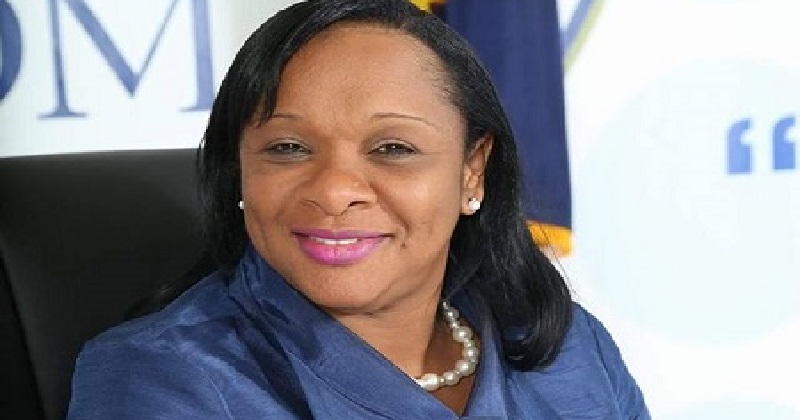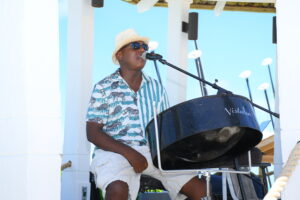#TurksandCaicos, December 12, 2017 – Providenciales –
Salutations,
It is with sincere thanks to the Caribbean Community (CARICOM) and the United Nations for this platform to address you today having experienced Hurricanes Irma and Maria, not only as Premier of the Turks and Caicos Islands, but more so as a “Disaster Survivor,” since Hurricanes Ike and Tropical Storm Hanna in 2008.
I also capitalize on this opportunity to showcase the solidarity within the region and further express gratitude to Agencies such as, CDEMA (to conduct critical damage assessments) and the Cayman Islands Governments (whose helicopter provided critical airlift), who comprised our early recovery niche after the devastating Hurricanes in September this year, arriving within days of the passage of Hurricane Irma. We are also grateful for the visit of the Chairman and Secretary General of Caricom. These acts demonstrated that solidarity for which we are grateful.
Overview of Impact
Hurricane Irma and Maria impacted every island in the Turks and Caicos Islands chain. Three (3) Islands under our disaster legislation were declared states of emergencies. Irma’s winds recording as high as 200 mph damaged all communication systems, water systems, electricity, damaged both major Hospitals on Grand Turk and Providenciales, destroyed one of our Community Clinics in a largely elderly populated settlement, damaged our two main Airports on Providenciales (our most populated Island and tourism center) and Grand Turk (our nation’s capital), displaced the Police Headquarters and critical services in Providenciales, displaced over 80% Government Offices, damaged 13 of 15 Government Schools, caused widespread damage to homes and critical infrastructure but greatly spared lives, major health challenges, our Cruise Ship Pier and our major Shipping Port. Immediate challenges apart from the provision of basic human needs of food, water and shelter, were to restore communications which was the greatest source of discontentment as this is even more essential in a multiple Island nation, we were able restore electricity and water, support the Hospitals and to aid in the safe stay and departure of tourists that remained on Islands. While we had few security concerns in the general population, we were forced to send additional resources to Grand Turk to assist the Police and provide support to the Prison as one of three Wings of the country’s Prison was burned and rendered uninhabitable.
We have since made much progress in our recovery with our private electricity provider being able as of November 6th to restore electricity to 100% of its customers who were able to receive the services having to replant over 1500 Poles as the damage was thankfully restricted to Transmission and Distribution and not Generation. Water systems were fully restored within weeks and Communications has been restored but not fully to Pre Storm conditions. Government Offices are still displaced and the majority of school children began to return on October 6, 2017. Only 6 students on the Island of Salt Cay, our tiniest inhabited Island, yet to return. Most of our Resorts have completed repairs and reopened but the closure resulted in major loss of revenue for TCI’s economy. We are currently engaged jointly with Private Sector stakeholders in an “Open For Business” campaign to ensure a strong upcoming tourism season which peaks at December and slows through to April.
Humanitarian aid, particularly development action, is critical for the Turks and Caicos Islands at this time. Preliminary data captured by the CDEMA’s Initial Damage Assessment Report, revealed that 80% of the housing stock was damaged due to the impact of Hurricane Irma. In other words, five thousand and eighty (5080) households across the islands received Levels 1 through 4 damages to their homes (level 4 being homes totally destroyed). The damages were similar in nature throughout the Islands and largely roofing related. We have already begun to ensure that the Code is reinforced and policing is strengthened.
Moreover, statistics confirmed that South Caicos and Salt Cay suffered ninety-nine to one hundred percent destruction. In South Caicos, a predominantly fishing community, would have seen only 2 of its homes spared damages. The Post Disaster Needs Assessment, that is still underway highlighted that approximately one thousand and five hundred persons are displaced, and seven hundred and twenty of those persons are in serious need of housing. In fact, this vulnerable population comprise the elderly, persons with income earnings of below, on average, twenty-five hundred US dollars per month, and in the most unfortunate and common case, are not Insurance Policy Holders. These Storms saw a record breaking 1500 persons in Shelters and two months later, we still house shelterees in one (1) official shelter in Grand Turk and several unofficial in Providenciales.
Coupled with the predicament regarding rebuilding of the housing stock, the Turks and Caicos Islands Government is also faced with approximately 11 million US dollars for repairs and retrofitting of public schools and public administration institutions.
It is an understatement when I say, the Turks and Caicos Islands is in need of urgent Humanitarian Support.
Critical assessments have shown that four to five feet of coastal erosion was recorded at the popular Grace Bay beach. This paints a lucid picture on adverse effects on our coastal environment, that is hinged on our main bread winner, Tourism. Therefore, there is an urgency to engage in in coastal protection efforts.
Hurricanes Irma and Maria have crippled our source of national level income over the past three months, resulting high deficits. Our fragile economy that serve as lucrative livelihoods are commonly derived from downstream activities, have been severely impacted.
To further emphasize, our major hotel chain, Beaches Turks and Caicos which is responsible for 60% of our airlift, the second largest employer only to TCIG and a major contributor to our GDP, were forced to close its doors for an extended period of four months after sustaining some $25 million dollars in damages. Resulting in a serious impact on visitor arrival numbers, airlift and employment. Instances like those reinforce my statement and coagulates my request for assistance from you, in that despite the high income derived from being a preferred Caribbean tourist destination, a small developing island like the TCI, is challenged by the heavy reliance on tourism. These Storms has pushed my less than 1 yr old Government to increase our efforts already underway in diversifying our economy and even our tourism product.
Climate Change
A Climate Change Committee led by the Office of the Premier was appointed early in my Administration and a draft Policy Statement on Climate Change Adaptation has been prepared for release in a few weeks with a Policy and Green Paper to follow. This will ensure that climate change adaptation provision is included in all national strategies, policies, programs and operations.
With such low lying areas, in August we have also agreed a Caribbean Development Bank (CDB) loan and grant funding together with Government funding to conduct a consultancy on building critical climate resilient sea defenses in our most vulnerable Islands. Research trends have revealed that changing climate attributes to future weather systems, that can be as equal or more deadly in intensity. Having to prepare for the Category 3 Hurricane Maria and only two(2) weeks after Hurricane Irma can be a viable indication that there may a shorter return period of high intensity, weather events of this nature.
In addition to the need for climate change adaptation solutions, the fact that Irma decapitated the electricity and telecommunication transmission and distribution networks, made it imperative that the Turks and Caicos Islands require expert solutions and improvements in areas such as a robust early warning mechanism and emergency communication systems. My Government has already engaged in dialogue with the communications sector well as critical utility services about the need to invest in underground infrastructure.
I also leverage this opportunity to encourage Experts with strong technical experience in urban and land use planning, building code application, particularly regarding roofing for structures, and design and build capacity to assist the Turks and Caicos in our rehabilitation process.
I would also like to commend the UNDP and CDEMA on current Safer Schools Building Programme, that is scheduled to commence on November 27th, 2017 in the Turks and Caicos Islands. We are also grateful for the full Team visit of the UN ECLAC and wish to extend our sincerest appreciation on behalf of the people of the Turks and Caicos Islands.
You can agree that the solutions required for the TCI’s ability to not only build back better, but to be resilient for future events lie in sustainable development actions.
It is within this regard, on behalf of my country, I emphasize your significant role in not only financial contributions, but in providing technical capacity to rethink traditional development principles, such as, “relief first and development later.”
Building back better is expensive, and is not an easily attainable goal, especially as multi Island nations bring its own set of inherent challenges and when a high percentage of our population have been adversely impacted with no insurance benefits. Nonetheless we must remain committed to our goals of rebuilding stronger than before.
Our immediate challenges and priorities are rebuilding of our schools and other critical government infrastructure including the Prison and Police Housing, investing in critical underground infrastructure through welcomed private sector partnership, assistance for housing repairs and investment in housing construction, debris management, and addressing budget shortfalls, managing our coastlines, robust early warning mechanism and emergency communication systems.
We have already begun to adopt the recommendations contained in the CDEMA Report and await the UN ECLAC’s Report due to be received soon. We are committed to rebuilding stronger and have together with the Tourist Board tagged our recovery phase: TCI Strong, Rebuilding Stronger Than Before.”
I urge you and your partners to honor your pledge to the 2030 Agenda commitment which states “leave no one behind,” and collaborate with us in achieving a proactive, climate-smart and community driven, bottom-up approach to a more sustainable and resilient Turks and Caicos Islands.
Thank you CARICOM,
Thank you United Nations
Thank you Donors.
God Bless You All
Hon Sharlene L Cartwright Robinson
Premier & Minister of Finance
The Turks and Caicos Islands


 TCI News6 days ago
TCI News6 days ago
 Bahamas News4 days ago
Bahamas News4 days ago
 Caribbean News4 days ago
Caribbean News4 days ago
 TCI News2 days ago
TCI News2 days ago
 Caribbean News6 days ago
Caribbean News6 days ago














